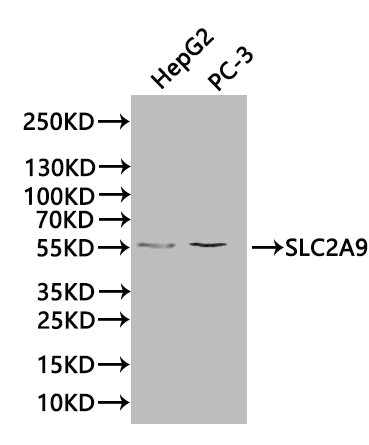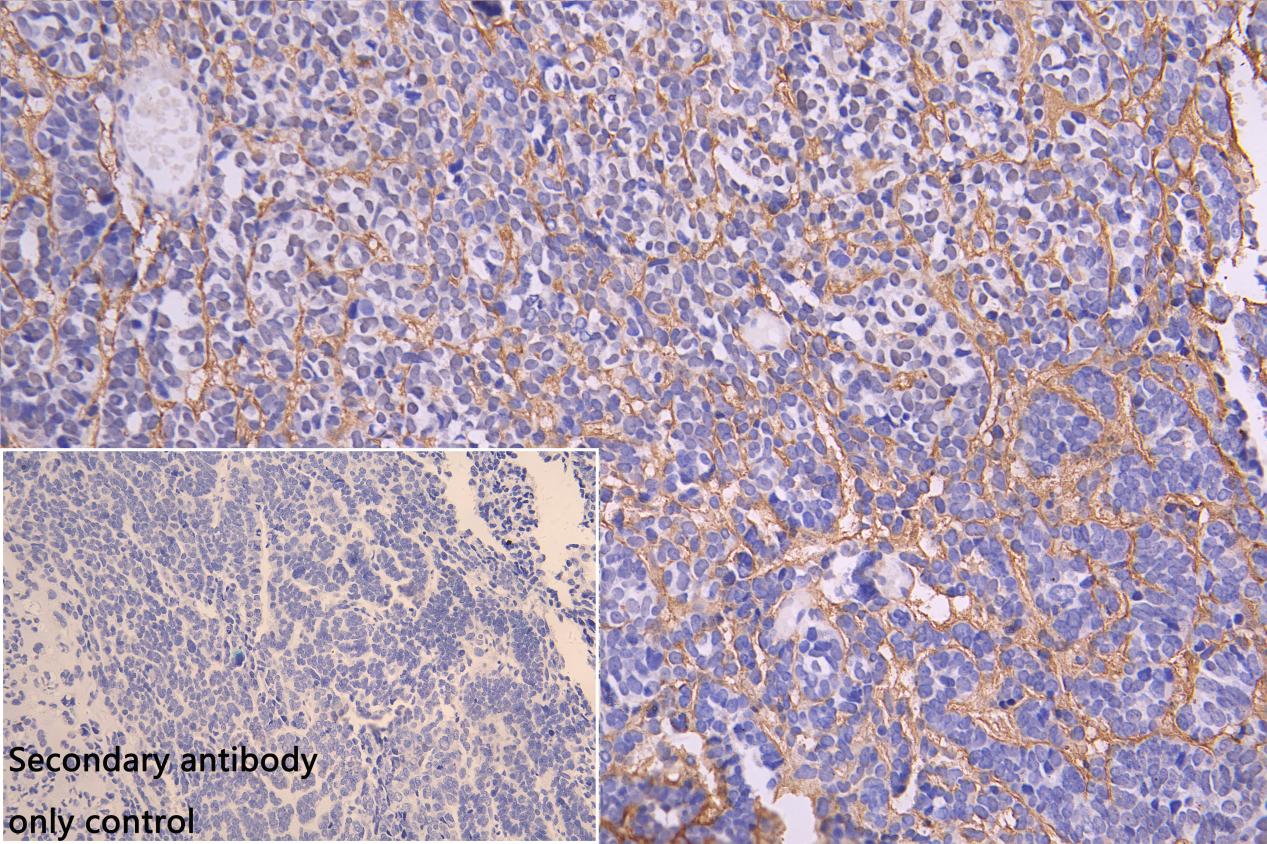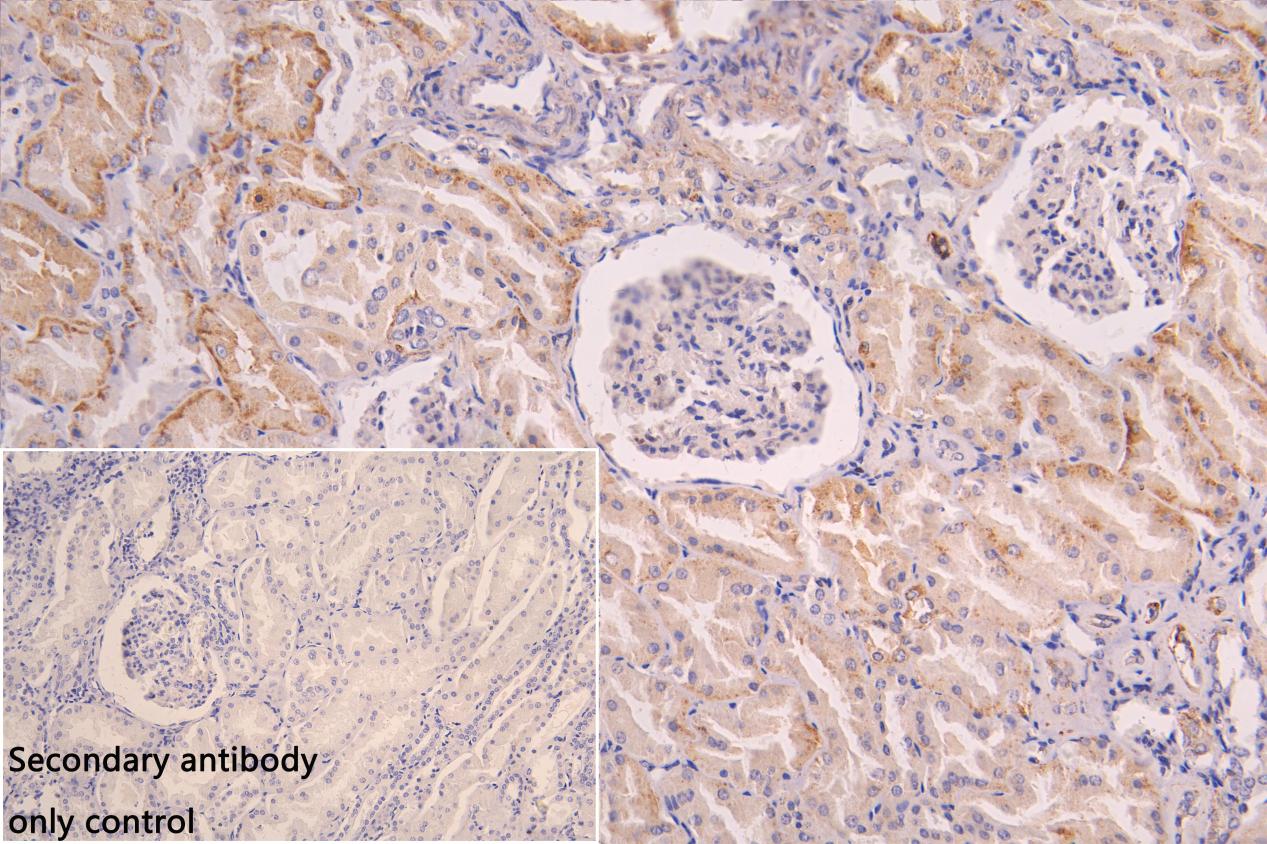Full Product Name
Rabbit anti-Homo sapiens (Human) SLC2A9 Polyclonal antibody
Alternative Names
glucose transporter 9 antibody; Glucose transporter like protein 9 antibody; Glucose transporter type 9 antibody; GLUT 9 antibody; GLUT-9 antibody; GLUT9 antibody; GLUTX antibody; GTR9_HUMAN antibody; Human glucose transporter like protein 9 antibody; SLC2A9 antibody; Solute carrier family 2 (facilitated glucose transporter) member 9 antibody; Solute carrier family 2 facilitated glucose transporter member 9 antibody; Solute carrier family 2 member 9 antibody; Solute carrier family 2 member 9 protein antibody; Solute carrier family 2, facilitated glucose transporter member 9 antibody; UAQTL2 antibody; Urate voltage driven efflux transporter 1 antibody; URATv1 antibody
Immunogen
Recombinant Human Solute carrier family 2, facilitated glucose transporter member 9 protein (473-511AA)
Immunogen Species
Homo sapiens (Human)
Conjugate
Non-conjugated
The SLC2A9 Antibody (Product code: CSB-PA873638LA01HU) is Non-conjugated. For SLC2A9 Antibody with conjugates, please check the following table.
Available Conjugates
| Conjugate |
Product Code |
Product Name |
Application |
| HRP |
CSB-PA873638LB01HU |
SLC2A9 Antibody, HRP conjugated |
ELISA |
| FITC |
CSB-PA873638LC01HU |
SLC2A9 Antibody, FITC conjugated |
|
| Biotin |
CSB-PA873638LD01HU |
SLC2A9 Antibody, Biotin conjugated |
ELISA |
Purification Method
>95%, Protein G purified
Concentration
It differs from different batches. Please contact us to confirm it.
Buffer
Preservative: 0.03% Proclin 300
Constituents: 50% Glycerol, 0.01M PBS, pH 7.4
Tested Applications
ELISA, WB, IHC
Recommended Dilution
| Application |
Recommended Dilution |
| WB |
1:500-1:5000 |
| IHC |
1:20-1:200 |
Storage
Upon receipt, store at -20°C or -80°C. Avoid repeated freeze.
Lead Time
Basically, we can dispatch the products out in 1-3 working days after receiving your orders. Delivery time maybe differs from different purchasing way or location, please kindly consult your local distributors for specific delivery time.
Description
A partial recombinant protein corresponding to 473-511 amino acids of human SLC2A9 protein is used as the immunogen to immunize the rabbit to produce the anti-SLC2A9 polyclonal antibody. The SLC2A9 antibody is available as the unconjugated IgG isoform and can react with human or mouse SLC2A9 protein. It is subjected to protein G purification and reaches up to 95% in purity. It can detect SLC2A9 protein in ELISA, WB, and IHC applications.
Its target protein SLC2A9 is a transmembrane transporter primarily responsible for regulating uric acid transport in the kidneys and other tissues. It plays an important role in maintaining the balance of uric acid in the body and preventing hyperuricemia and related health problems. Mutations in the SLC2A9 gene have been associated with various forms of hyperuricemia and gout.
Usage
For Research Use Only. Not for use in diagnostic or therapeutic procedures.







